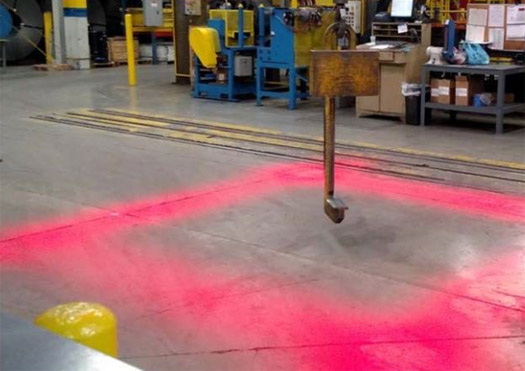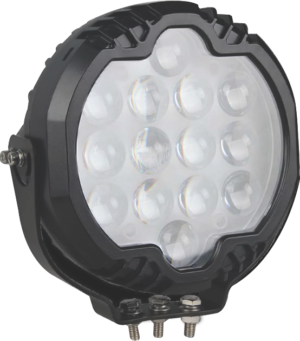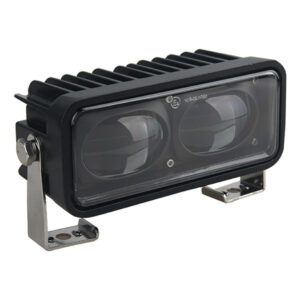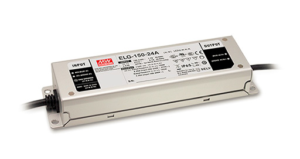Many companies operating within the construction and manufacturing industry utilize overhead cranes to transport heavy loads from point A to point B. These cranes are extremely useful for heavy materials handling; however, there are several potential hazards for pedestrians around the crane loading areas.
This article discusses the primary hazards involving overhead cranes and provides insight into a modern cutting-edge solution for overhead crane safety.
Potential Overhead Crane Hazards
Materials Falling
One of the most common safety hazards associated with overhead cranes involves materials falling off the crane. This is a major safety concern for nearby pedestrians because the materials being handled are often extremely heavy or hazardous. For instance, these cranes may carry heavy metal crates in warehouses or hot molten materials in manufacturing plants.
Since overhead cranes transport these materials over a given distance from high heights, materials falling off the crane are a potentially fatal hazard for workers or other pedestrians within the area. This is not only hazardous to people but also presents a risk of damage to equipment or property in the surrounding area.
The Occupational Safety and Health Administration (OSHA) has specific requirements for Materials Handling and Storage in regards to overhead cranes. If proper safety measures aren’t followed, materials falling off the crane could result in fatalities, extensive property damage, or major lawsuits that have extreme economic implications for the entity responsible for the crane.
In addition to ensuring workers have essential personal protective equipment (PPE), the crane should be equipped with the necessary technology to warn pedestrians of potential danger around the area. One modern solution regarding safety around cranes during material handling involves safety warning lights. Using LED technology, cranes are able to project red and blue warning lines around the loading area.
These blue and red LED lights serve two purposes. One, they give a visual warning to pedestrians that a heavy load is being handled. Secondly, they assist the crane operator by giving him visual cues for more precise handling. Ultimately, this modern LED technology is a great way to avoid hazards and improve overall safety around cranes.
Electrical Safety Concerns
If equipment or materials from an overhead crane were to come in contact with an electrical power source, the result is potentially catastrophic. According to OSHA, around 50 percent of accidents involving overhead cranes involve machinery coming into contact with a power line. This presents a major safety concern because anyone touching the crane or within the vicinity can be electrocuted.
It’s critical for crane operators and other workers to receive the necessary training in order to avoid hazardous areas where there’s a risk of electrocution. OSHA has documentation regarding electrical safety around overhead cranes. This documentation can be found within the links below.
https://www.osha.gov/laws-regs/regulations/standardnumber/1926/1926.1438
https://www.osha.gov/laws-regs/regulations/standardnumber/1910/1910.179
In addition to following the necessary safety guidelines, using LED crane positioning lights can assist crane operators with precision. This helps by projecting visual cues for them to increase the accuracy while carrying the load. The improved accuracy for crane operators helps them with avoiding potential hazards such as electrical safety concerns.
Structural Failure
When it comes to the handling of heavy and/or hazardous materials, there is a potential risk of structural failure for the equipment used during handling. This failure is usually attributed to capacity overload. In other words, when the overhead crane is carrying more weight than the approved limit, the risk of structural failure is significantly magnified.
Structural failure of overhead cranes may also be attributed to using faulty equipment or simply wear and tear overtime. OSHA has guidelines for overhead and gantry crane capacity limits. An OSHA crane inspection is usually conducted at least once per year to ensure safety.
Using OSHA overhead crane regulations helps mitigate the risk of structural failure. Also, in addition to following safety guidelines, having visual warning signals around crane loading areas can help prevent injury or fatality to pedestrians around the area in the event of a structural failure.
Crane Safety Technology
At Straits Lighting, we manufacture cutting-edge LED lighting for safety within industrial environments. This includes LED lighting for overhead cranes. Our products increase safety for workers and increase precision for crane operators.

Overhead Crane Safety Products
-
Login to see prices
Crane Light 140W – 58W Blue
Safety Crane Lights- Size: 11.8 x 12″
- Watts: 140W
- Lumens: 11,666
- External driver sold separately
- Blue Beam
-
Login to see prices
Crane Light 140W – 58W Red
Safety Crane Lights- Size: 11.8 x 12″
- Watts: 140W
- Lumens: 11,666
- External driver sold separately
- Red Lens
-
Login to see prices
Crane Light 18W Blue
Safety Crane Lights- Size: 6.03 x 2.54 x 2.62
- Watts: 18W
- Lumens: 1,500
- Color Temperature: 6000K
- Blue Beam
- External driver sold separately
-
Login to see prices
LED 150W Crane Light Driver
Safety Crane Lights- LED Driver 150W
- Can hook up multiple Lights (As long as you do not exceed the 150W)
Resources
OSHA 1910.179 (Overhead and Gantry Crane Regulations)
OSHA Overhead Crane Training Requirements
Crane Lighting Specifications
Crane Light 140W
Crane Light 24W
Crane Light 18W




